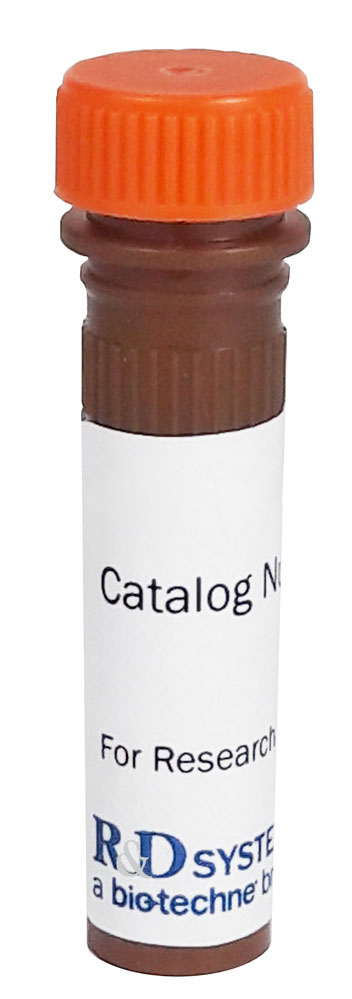Human/Mouse/Rat 14-3-3 gamma Antibody Summary
Met1-Asn247
Accession # P61981
Customers also Viewed
Applications
Please Note: Optimal dilutions should be determined by each laboratory for each application. General Protocols are available in the Technical Information section on our website.
Scientific Data
 View Larger
View Larger
Detection of Human, Mouse, and Rat 14‑3‑3 gamma by Western Blot. Western blot shows lysates of HeLa human cervical epithelial carcinoma cell line, NIH-3T3 mouse embryonic fibroblast cell line, and L6 rat myoblast cell line. PVDF membrane was probed with 1 µg/mL Mouse Anti-Human/Mouse/Rat 14-3-3 gamma Monoclonal Antibody (Catalog # MAB5700) followed by HRP-conjugated Anti-Mouse IgG Secondary Antibody (Catalog # HAF007). A specific band for 14-3-3 gamma was detected at approximately 30 kDa (as indicated). This experiment was conducted under reducing conditions and using Immunoblot Buffer Group 1.
 View Larger
View Larger
Detection of Human 14‑3‑3 gamma by Western Blot. Western blot shows recombinant human 14-3-3 beta, epsilon, eta, gamma, sigma, theta, and zeta (5 ng/lane. PVDF membrane was probed with 1 µg/mL Mouse Anti-Human/Mouse/Rat 14-3-3 gamma Monoclonal Antibody (Catalog # MAB5700) followed by HRP-conjugated Anti-Mouse IgG Secondary Antibody (Catalog # HAF007). A specific band for 14-3-3 gamma was detected at approximately 30 kDa (as indicated). This experiment was conducted under reducing conditions and using Immunoblot Buffer Group 1.
Preparation and Storage
- 12 months from date of receipt, -20 to -70 °C as supplied.
- 1 month, 2 to 8 °C under sterile conditions after reconstitution.
- 6 months, -20 to -70 °C under sterile conditions after reconstitution.
Background: 14-3-3 gamma
14-3-3 proteins are a highly conserved family of homo- and heterodimeric phosphoserine/threonine-binding proteins present in all eukaryotic cells. 14-3-3 proteins act as key regulators of intracellular signal transduction through their ability to bind specific motifs phosphorylated on serine or threonine. There are at least 7 distinct mammalian 14-3-3 genes: alpha / beta, epsilon, eta, gamma, tau / theta, sigma, and zeta /δ. 14-3-3 gamma becomes phosphorylated in response to PDGF and subsequently interacts with different PKC isoforms.
Product Datasheets
Citation for Human/Mouse/Rat 14-3-3 gamma Antibody
R&D Systems personnel manually curate a database that contains references using R&D Systems products. The data collected includes not only links to publications in PubMed, but also provides information about sample types, species, and experimental conditions.
1 Citation: Showing 1 - 1
-
YAP-dependent Wnt5a induction in hypertrophic adipocytes restrains adiposity
Authors: GJ Lee, YJ Kim, B Park, S Yim, C Park, H Roh, Y Moon, JK Seong, H Park
Cell Death & Disease, 2022-04-27;13(4):407.
FAQs
No product specific FAQs exist for this product, however you may
View all Antibody FAQsIsotype Controls
Reconstitution Buffers
Secondary Antibodies
Reviews for Human/Mouse/Rat 14-3-3 gamma Antibody
There are currently no reviews for this product. Be the first to review Human/Mouse/Rat 14-3-3 gamma Antibody and earn rewards!
Have you used Human/Mouse/Rat 14-3-3 gamma Antibody?
Submit a review and receive an Amazon gift card.
$25/€18/£15/$25CAN/¥75 Yuan/¥2500 Yen for a review with an image
$10/€7/£6/$10 CAD/¥70 Yuan/¥1110 Yen for a review without an image









